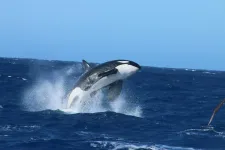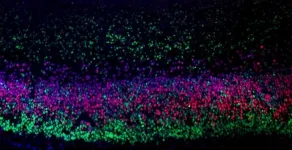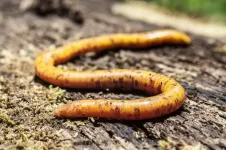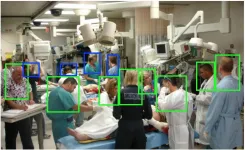(Press-News.org) In a retrospective study of trauma patients over 65 years of age attended by KSS, it was found that, although a number of these patients had sustained a minor injury through seemingly innocuous mechanisms, a high proportion of this group required advanced clinical interventions and subsequent tertiary level care at a major trauma centre.
The study also identified that dispatch time to these patients was typically longer, in particular in instances when KSS's critical care was requested by an ambulance crew already in attendance.
With response time often critical to patient outcomes, the findings suggest that dispatch accuracy to older trauma patients could be improved. Further evaluation is also warranted of how age-dependent triggers for mechanism and physiological parameters could optimise dispatch sensitivity and HEMS utilisation for this group, helping to overcome under-triage.
The research looked at KSS data over a six-year period. During this time:
KSS attended 1321 trauma patients aged over 65 years (median age 75 years);
KSS's dispatch was immediate in 32% of cases, after interrogation by a dispatcher in the Emergency Operations Centre in 43% of cases and following a request from South East Coast Ambulance Service crew from the scene in 25% of cases;
Older age was found to be associated with a longer dispatch interval and was significantly longer in the crew request category (median 37 minutes);
Immediate dispatch to patients with isolated head injuries often resulted in the KSS HEMS team delivering pre-hospital emergency anaesthesia (PHEA, 39%). However, over one third of head injured patients attended by a crew request dispatch also received PHEA (36%).
69% of those head injured patients attended by a crew request were still triaged to a major trauma centre.
Professor Richard Lyon MBE, Associate Medical Director at KSS and Professor of Pre-Hospital Emergency Care at the University of Surrey said: "We know that trauma in older people, particularly simple falls from standing height in patients on blood thinning medication, is becoming increasingly common. Older trauma represents 20% of all major trauma in the UK and projections suggest that by 2040 one in four people will be aged 65 or over. Many of these patients would benefit from early pre-hospital critical care and rapid transfer to a major trauma centre, so it is imperative we optimise dispatch to this group of patients."
"This study has demonstrated that many of these patients do not fulfil the initial criteria for immediate dispatch of HEMS, but that they need advanced interventions and subsequent tertiary level care at major trauma centres."
Advances in healthcare have enabled greater independence and activity in older people. This has led to a greater prevalence of older trauma, with 50% of severely injured patients over the age of 65-years recorded on the Trauma Audit and Research Network (TARN). Inevitably, growing demand is being placed on acute healthcare services.
HEMS, like KSS, provide enhanced pre-hospital medical care to major trauma patients, such as PHEA. Accurate tasking of HEMS to those patients who may benefit most from their advanced critical care interventions is important as this is a highly valuable resource.
Emergency medical dispatchers track an established pathway during a 112/999 call to discern traumatic injuries. The dispatch triggers are largely validated in the adult trauma population and not specifically adapted to the older trauma subgroup. This study has shown that clinical observations of traumatically injured older adults may present with parameters equivalent to younger 'well' adults, and that therefore injury severity is potentially masked to both the caller and clinician, and consequently KSS's dispatch was delayed.
This was particularly notable in falls. A significant proportion of older trauma patients in the study had fallen from standing height (less than two metres). In people who are under 65 years of age, falls of this type can lead to serious injury in 4% of cases. In people over 65 years of age, 30% are likely to experience serious injury, and these incidents are 10 times more likely to cause death.
This study showed that, in the majority of these cases, KSS was dispatched once a ground ambulance crew had assessed the patient, leading to a potential delay in providing the patient with advanced critical interventions. In a number of these cases, patients required specialist interventions at the scene and 60% were transferred to a major trauma centre.
Previous research has shown that HEMS can contribute to a survival benefit in these patients , and now this study identifies the need to improve efficiency of HEMS dispatch in the older trauma subgroup.
Professor Richard Lyon continued:
"Advanced interventions provided by HEMS are an unparalleled but scarce resource and it is crucial that dispatch triggers are effective. KSS is a charity, reliant upon public donations and fundraising for the £15 million it costs each year to deliver our service to the 4.8 million people we serve."
"Improving triage is key, so that those patients who need immediate critical care receive it as quickly as possible. Further research is warranted focusing on how age-dependent triggers can improve efficiency along with how live video-transmission may help gauge physiological parameters to expedite dispatch."
The research has been published by Scandinavian Journal of Trauma Resuscitation and Emergency Medicine.
INFORMATION:
Soon after E.L. James's Fifty Shades of Grey appeared in 2015, the book market was inundated with a flood of erotic bestsellers. People from all corners began wondering what this type of novel's secret of success could be. Now, a research team at the Max Planck Institute for Empirical Aesthetics (MPIEA) in Frankfurt/Main, Germany, has taken a closer look at the readership of erotic novels and investigated the causes of this literary predilection.
In the media as well as the academy, contemporary erotica is typically dismissed as being of low literary value. Critics and scholars tend to classify its readers as having mediocre to poor taste, without, however, examining ...
Twenty dollars a month might not seem like a lot to pay for health insurance. But for people getting by on $15,000 a year, it's enough to make some drop their coverage - especially if they're healthy, a new study of Medicaid expansion participants in Michigan finds.
That could keep them from getting preventive or timely care, and could leave their insurance company with a sicker pool of patients than before, say the researchers from the University of Michigan and University of Illinois Chicago. They have published their findings as a working paper through the National Bureau of Economic Research, ahead of publication in the American Journal of Health Economics.
The study has implications for other states that require ...
DURHAM, N.C. - A potential new vaccine developed by members of the Duke Human Vaccine Institute has proven effective in protecting monkeys and mice from a variety of coronavirus infections -- including SARS-CoV-2 as well as the original SARS-CoV-1 and related bat coronaviruses that could potentially cause the next pandemic.
The new vaccine, called a pan-coronavirus vaccine, triggers neutralizing antibodies via a nanoparticle. The nanoparticle is composed of the coronavirus part that allows it to bind to the body's cell receptors and is formulated with a chemical booster called an adjuvant. ...
A Flinders University researcher has finally fathomed why large numbers of killer whales gather at a single main location off the Western Australian southern coastline every summer.
In a new paper published in Deep Sea Research, physical oceanographer Associate Professor Jochen Kampf describes the conditions which have produced this ecological natural wonder of orcas migrating to the continental slope near Bremer Bay in the western Great Australian Bight from late austral spring to early autumn (January-April).
"The aggregation is connected to the local marine food web that follows from the upwelling of benthic particulate organic matter (POM) ...
A novel approach to immunotherapy design could pave the way for new treatments for people with an aggressive form of brain cancer called glioblastoma.
Using specifically designed receptors, researchers were able to completely clear brain cancer tumours in preclinical models, using chimeric antigen receptor (CAR) T cell therapy.
Published today in Clinical & Translational Immunology and led by Associate Professor Misty Jenkins, the research is a crucial step towards developing new immunotherapy treatments for this devastating illness.
More than 1800 Australians are diagnosed with brain cancer every year. ...
A new micro-light-emitting diode (micro-LED) developed at KAUST can efficiently emit pure red light and may help in the quest to develop full-color displays based on just a single semiconductor.
Micro-LEDs are a promising technology for the next generation of displays. They have the advantage of being energy efficient and very small. But each LED can only emit light over a narrow range of colors. A clever solution is to create devices that combine many different LEDs, each emitting a different color. Full-color micro-displays can be created by combining red, green and blue (RGB) micro-LEDs. Now, a KAUST team of Zhe Zhuang, Daisuke Iida and Kazuhiro Ohkawa have worked to develop ...
SAN FRANCISCO, CA (May 10, 2021) -- The Gulf of Guinea islands harbor an abundance of species found nowhere else on Earth. But for over 100 years, scientists have wondered whether or not a population of limbless, burrowing amphibians--known as caecilians--found on one of the islands is a single or multiple species. Now, a team of researchers from the California Academy of Sciences and the Smithsonian National Museum of Natural History has contributed the strongest evidence to date that there is not one, but two different species of caecilians on São Tomé ...
Computer scientists at the University of California San Diego have developed a more accurate navigation system that will allow robots to better negotiate busy clinical environments in general and emergency departments more specifically. The researchers have also developed a dataset of open source videos to help train robotic navigation systems in the future.
The team, led by Professor Laurel Riek and Ph.D. student Angelique Taylor, detail their findings in a paper for the International Conference on Robotics and Automation taking place May 30 to June 5 in Xi'an, China.
The project stemmed from conversations with clinicians over several years. The consensus was that robots would best help physicians, nurses and staff ...
An international team led by researchers from the Xinjiang Institute of Ecology and Geography (XIEG) of the Chinese Academy of Sciences and the University of Geneva has found that flash floods may triple across the Earth's "Third Pole" in response to ongoing climate change.
Their findings were published in Nature Climate Change on May 6.
The Hindu Kush-Himalaya, Tibetan Plateau and surrounding mountain ranges are widely known as the "Third Pole" of the Earth. It contains the largest number of glaciers outside the polar regions.
Due to global warming, the widespread and accelerated melting of glaciers over ...
Remote quantum distribution on the ground is limited because of the loss of photon in optical fibers. One solution for remote quantum communication lies in quantum memories: photons are stored in the long-lived quantum memory (quantum flash drive) and then quantum information is transmitted by the transportation of the quantum memory. Given the speed of aircrafts and high-speed trains, it is critical to increase the storage time of the quantum memories to the order of hours.
In a new study published in Nature Communications, a research team led by Prof. LI Chuanfeng and Prof. ZHOU Zongquan from University of Science and Technology of China (USTC) extended the storage time of the optical memories to over one hour. It broke the record of one minute achieved by German researchers in 2013, ...





